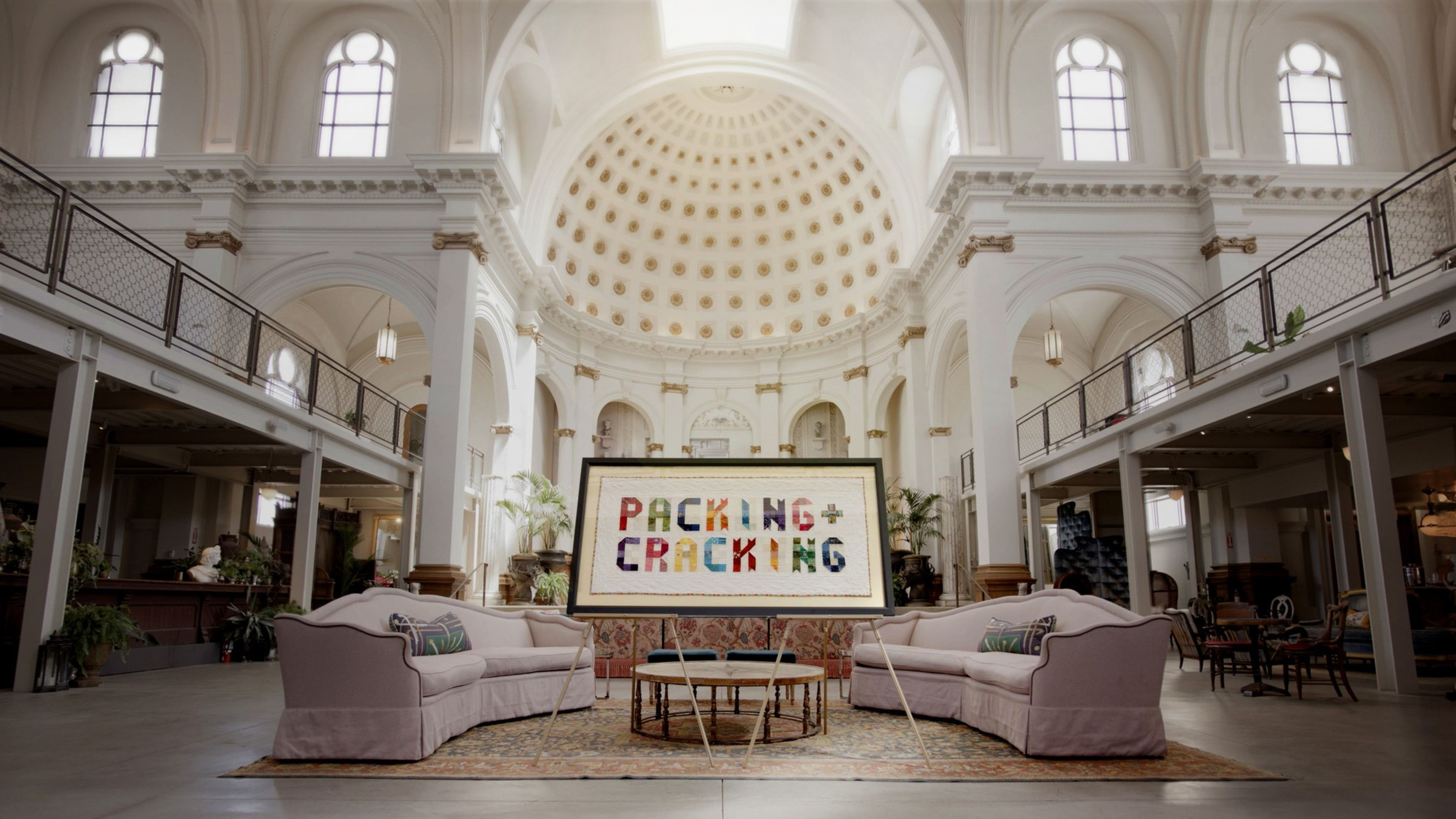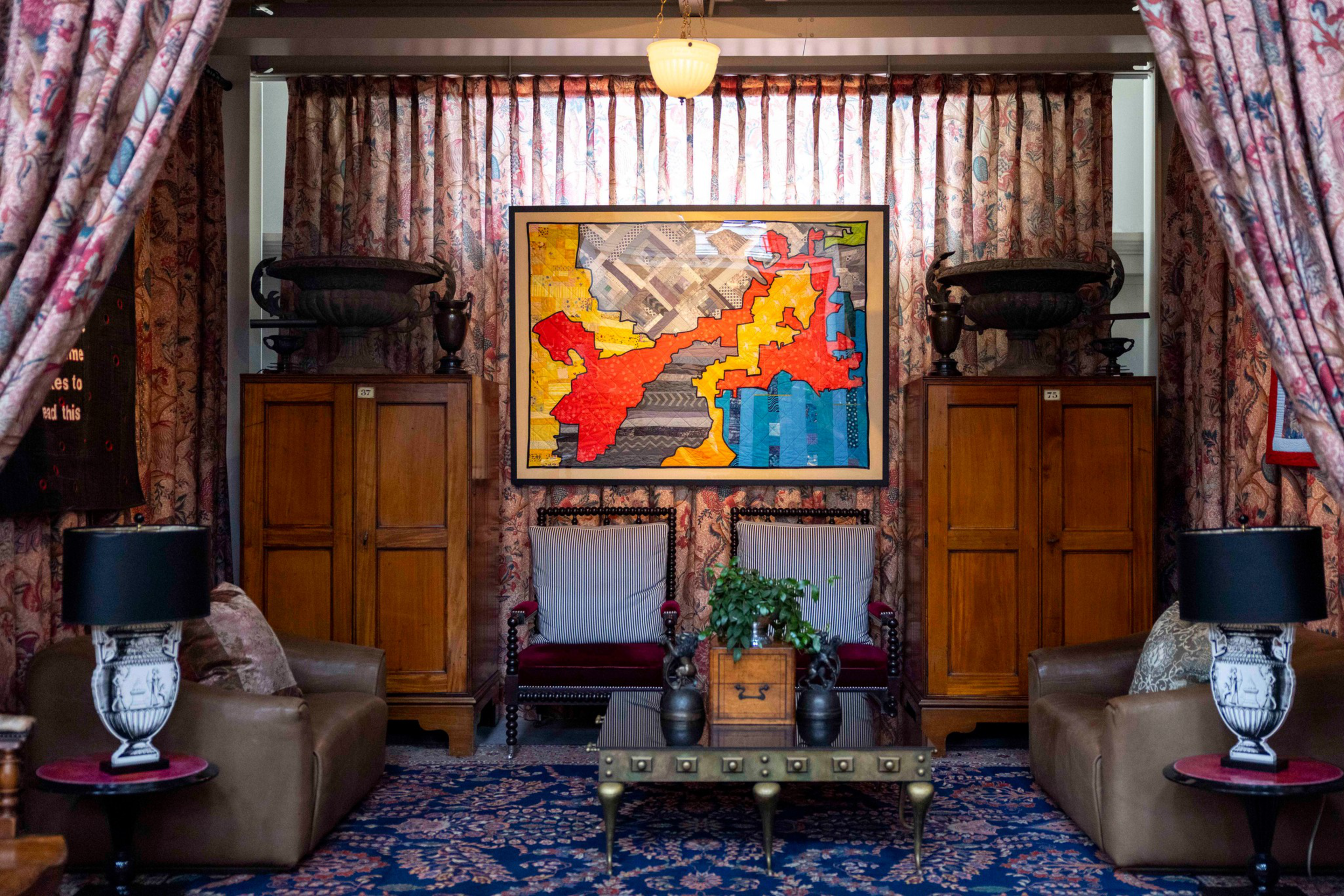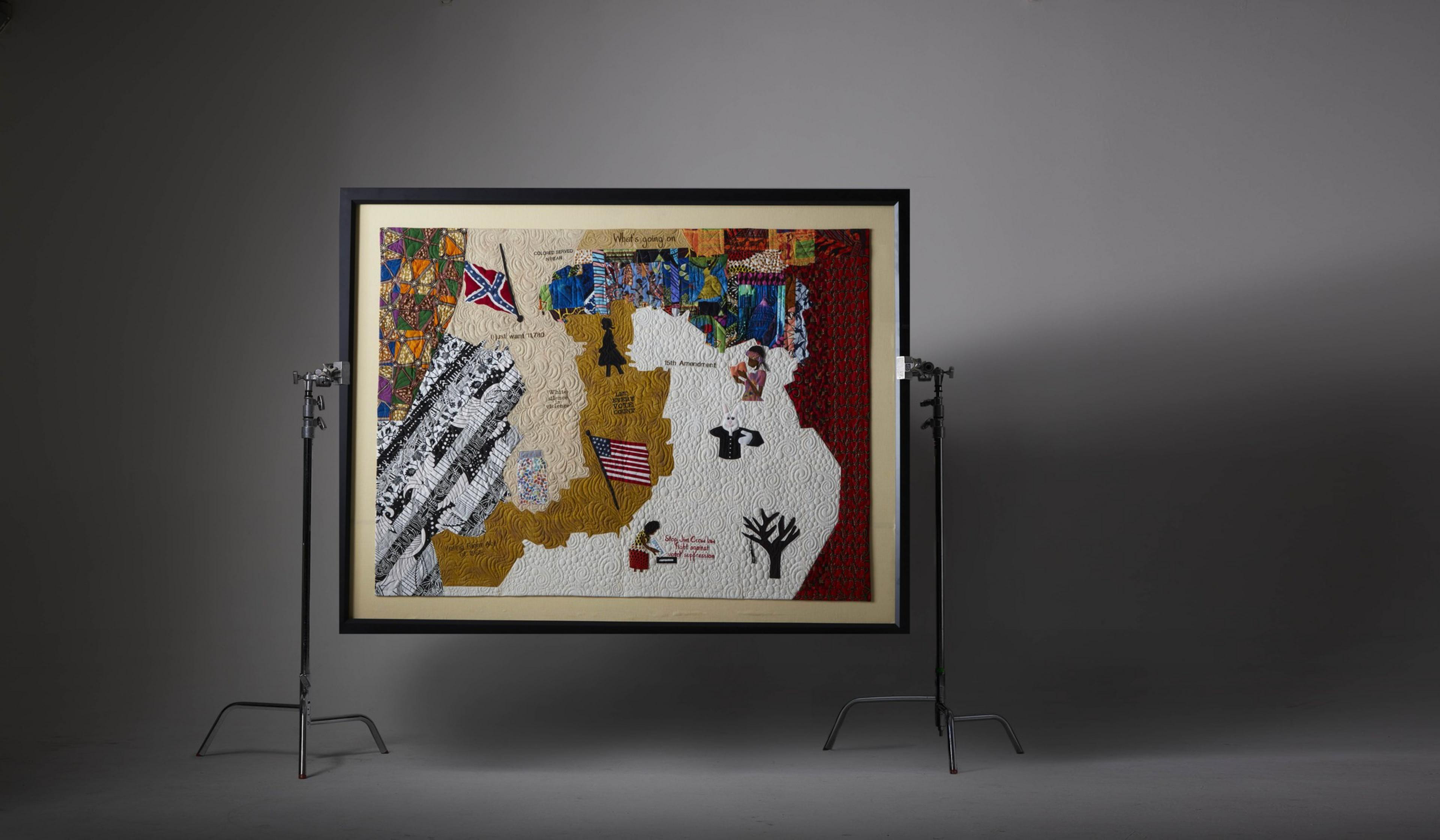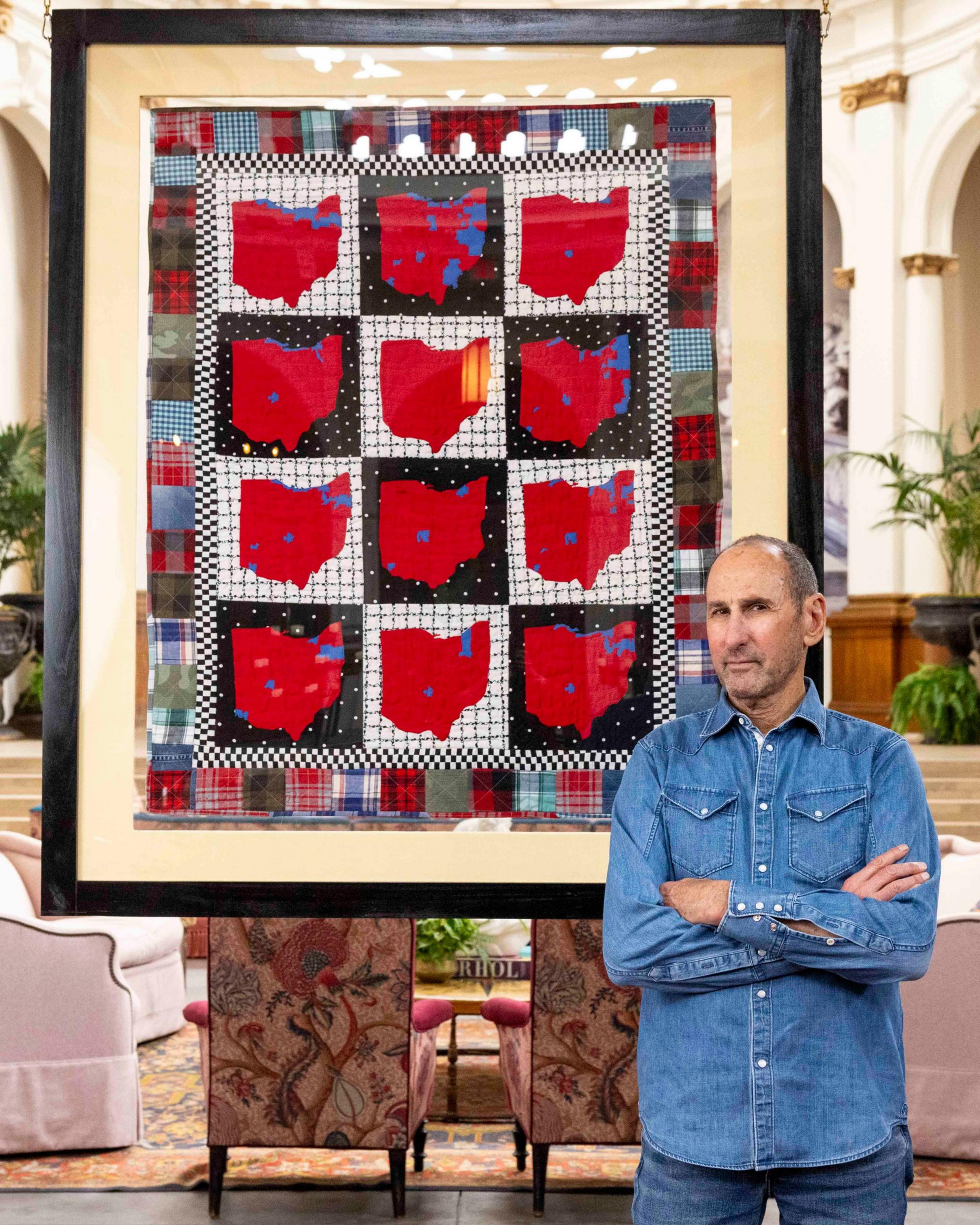In the winter of 1812, when Massachusetts Gov. Elbridge Gerry signed off on his party’s redistricting plan in Boston’s Essex County, it didn’t take long for the public to get irate.
The catalyst? A predatory salamander.
A comic printed by the Boston Gazette depicted the new electoral district in the form of a slithering amphibian. The Gazette dubbed it “The Gerry-Mander,” and the phrase has lived in infamy ever since.
What does this cautionary tale teach us, if not that art — when properly marketed — can be a pesky instrument for social change?
One of San Francisco’s most famous marketers, Rich Silverstein of advertising agency Goodby Silverstein & Partners, collaborated with curator Martin Strickland to take this concept to the next level. At a new show at Saint Joseph’s Arts Society, some 40 quilts made by 13 Bay Area artists take on the subject of gerrymandering and its endless collateral damage.

Held design mogul Ken Fulk’s SoMa church-turned-art gallery, “Packing and Cracking: The Art of (and Response to) Gerrymandering,” opens with a ticketed reception on Tuesday. The show will feature interactive events over the next several months, inviting attendees to help shape the artwork on the walls, just as voters can morph their political landscapes.
“We don’t know how things are going to go in November, and to have a kind of healing to lift our mind and spirits through sewing could be a real benefit for people,” said Peggy Cleary, who created the show’s centerpiece, “Packing + Cracking.”

For Silverstein, the medium of quilting is the message — a fitting refrain for one of the world’s most notable ad men. In addition to cocreating the 1993 ad campaign “got milk?” Silverstein worked on four Super Bowls and helped design a new Golden State Warriors logo earlier this summer. In 2021, he showed “I Read the News Today, Oh Boy (opens in new tab),” a solo exhibition at Minnesota Street Projects that featured clippings from The New York Times throughout former President Donald Trump’s first impeachment hearing.
Not unlike gerrymandering, quilting is an early American tradition that requires strategic manipulations to create the effect that everything just fell into the right place.
“The quilts are so beautiful and yet so devious,” Silverstein said.
Strickland, who worked for more than a decade in several roles at the Yerba Buena Center for the Arts before coming on as director of Saint Joseph’s Arts Society, said the project was an opportunity to create a larger dialogue around the effects of gerrymandering.
“Rich’s interest in gerrymandering and quilting was incredibly compelling to me,” he said. “It met this moment we’re all facing this fall.”

The show features maps of gerrymandered cities and states across the country, from Utah and Ohio to Atlanta, Dallas-Fort Worth, and Brooklyn.
While not all the works focus on gerrymandering, they address the residual effects of “packing,” which concentrates a party’s voting power in one district, and “cracking,” which disperses voters across multiple districts to dilute their influence. Some quilts touch on abortion rights, identity, and gun control.
- Date and time
- Tuesday, Sept. 17
- Opening hours
- 7-9 p.m.
- Price
- $15
